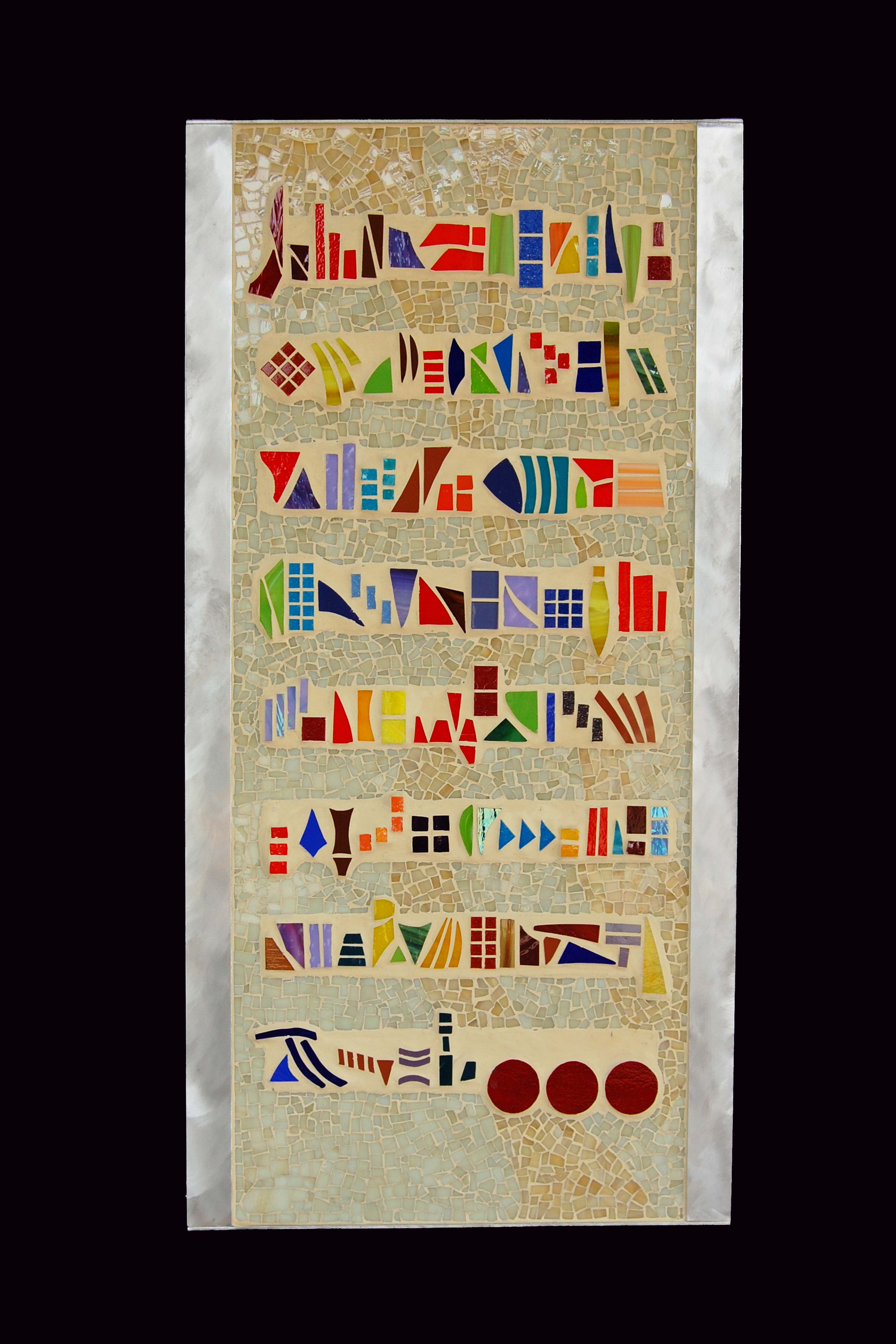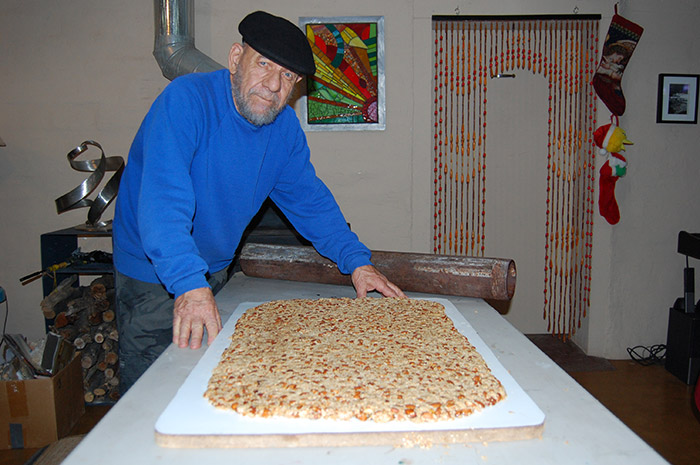Note: This is one of eight “Cultural Moments” included in my book MOSAICS WITH ROSANO – A BEGINNER’S GUIDE TO CREATING ARTFUL MOSAICS. Copies of this and other of my books can be purchased by contacting me.
Email: aprosano@gmail.com
Facebook Private Message
Snailmail: 2550 W. Moore Road Tucson, AZ 85755 Tel. 520-297-3606
SOME OF OUR CAVE-DWELLING ANCESTORS were probably ‘preliminary’ mosaic makers, perhaps unintentionally. One of the more-refined cavers might have arranged six rocks in a straight line or in a circle, thought it was pretty cool, tapped his or her companion on the shoulder giving a sign which meant “Look what I just did.” The companion could have responded “Hey … Neato”, except, of course, in their local dialect. But our historians seem to agree that the Sumerians did something approaching mosaics about 5000 years ago (Sumer was located in the southern part of today’s Iraq, between the Tigris and Euphrates rivers). The Sumerians pushed terracotta cones point-first into mud backgrounds to form designs.
About 800 BC, pavements using pebbles as the material were being constructed. Different colors began to be used for designs and patterns. Then came the Greeks, about 400 years after that, with detailed designs and stones arranged to depict animals and people. The Greeks had raised the artistic level of mosaic work from mere decoration to an art. Another 200 years and they were manufacturing pieces (called ‘tesserae’, meaning ‘having four sides’) for mosaics with yet more color and more detail.
After the Macedonian Alexander the Great conquered the Greeks, various cities became centers for the mosaic arts. Alexandria, in present-day Egypt was prominent in that respect. As Alexander’s empire fell apart, the Romans (over a period of several centuries) took control of the ‘known world’. Under Roman rule, mosaicists thrived. Mosaic art was fashionable and a conspicuous sign of wealth (since Lamborgini and Bugatti sports cars were not easily available at the time). A wealthy family’s home might have several floor or wall mosaics commissioned. The Roman bathhouses used mosaics extensively for reasons beyond simple beauty … mosaic floors and walls were easy to clean and maintain (they still are) and thus hygienic. They were also waterproof and reflected and scattered available light (so important in ancient buildings).
So it was the Romans, often using Greek artists and ideas, who made mosaics ‘their own’ as they often did with anything of value from conquered territories. The Roman invention of ‘pozzolanic’ cement and their huge technological advancement of mortars, grouts, and variations of cement and concrete allowed advances in every field of construction, the mosaic arts included.
Consider now … a sheet of glass, a fired-clay pot, or a thin slab of marble … all vulnerable to breakage, all easily shattered. Now consider the pieces, the shards … those small pieces or fragments … they are extremely durable and endure nearly forever. That characteristic, combined with good cement and fine craftsmanship, has allowed many, many mosaics to survive the centuries (in far better shape than countless drawings, paintings, and frescoes). It is that durability combined with little requirement for maintenance which helps mosaic art retain its popularity. Glass manufacturing techniques developed and practiced 1000 years ago in Italy’s Venice, today give us glass tesserae or glass sheets of almost any imaginable color. Today, of course, there is continual experimentation, expansion, and improvement in products and processes used in mosaics.
Ancient mosaics (some truly enormous in size) can be found today in the countries of North Africa, in Turkey, in Greece, the European countries and especially, of course, in Italy and Sicily. That, then, is my brief ‘cultural note’ … a one-page skimming of mosaic history.
Aureleo Rosano
January 2018
www.rosano.org
Tucson, AZ


